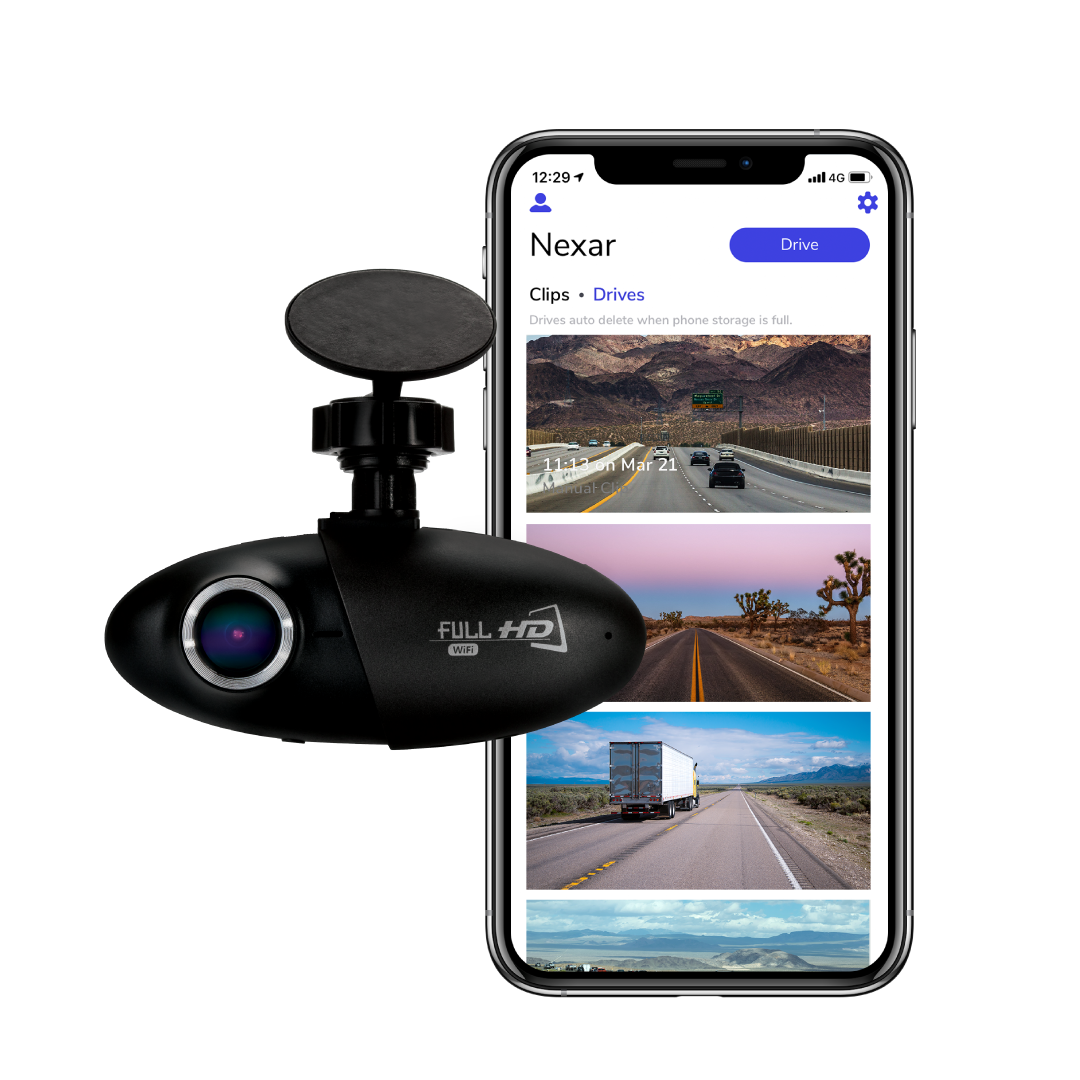You’re driving on the highway when – bam – the car on your right comes out of nowhere and slams into you. After pulling over to assess the damage, the other driver claims you were weaving into his lane. If only you had proof of what happened – say, a video.
That’s what’s driving the booming dash-cam business, where inexpensive video cameras are installed onto a car’s dashboard to capture everything from accidents to bad driving.
But getting the footage off those dash-cams can be a real pain. First, you have to remove the tiny SD card, carefully insert it into the slot in your computer and scroll until you find the footage. Then comes an even tougher puzzle: How do you easily output the exact video you want to send to your insurance company?

Nexar is a driver’s (and his or her insurance company’s) new best friend.
The Israeli startup’s software, coupled with existing hardware from third-party dash-cam manufacturers, uses computer vision and the dash-cam’s built-in sensors to detect when a car has been in an accident.
The appropriate footage, which is continuously uploaded to the cloud, is then sent directly to your insurance agent via the Nexar companion app running on your smartphone.
Nexar can even notify a towing service to come and take your vehicle to the nearest mechanic or – if there’s been an injury – alert emergency responders.
Nexar CEO Eran Snir says that Nexar’s software gives “superpowers to regular dash-cams.”
The Nexar app formally launched in 2016 and is now used by drivers in 740 cities across 160 countries, with the biggest markets being New York City (where Nexar’s app is used by more than 10 percent of ride-sharing drivers), San Francisco, Tel Aviv and Las Vegas. China’s Alibaba joined Nexar’s 2018 Series B round, which added $30 million to the company’s coffers.
Crowdsourcing
Very much like traffic app Waze, the more cars with the Nexar app running, the more Nexar can leverage its vehicle-to-vehicle network to provide added value, such as alerts on dangerous driving conditions from far ahead.
“If someone five cars ahead of you does a hard brake, you won’t know until it’s too late,” Snir tells ISRAEL21c during a conversation that was conducted, appropriately, while the Nexar CEO was driving. But if the drivers ahead of you have the Nexar app running, Nexar can warn you much earlier.
“Every vehicle becomes the eyes for other vehicles. In that way, we can alert a driver 10 or 20 seconds before a possible collision.”

If Nexar detects a car in front of you going over a pothole or something blocking the highway, that information can be paid forward as well.
The cameras only work when the car is running. So, if your car is sideswiped in a parking lot, you’re out of luck. Snir says there are a few dash-cams makers that include their own battery so they “automatically start recording” if anything hits your vehicle while it’s parked, “then sync with the Nexar app on your phone when you get back to your car.”
Cities testing Nexar
From a technical perspective, what Nexar does is divide all the roads in a city into one-square-meter hexagons. Each hexagon is given its own IP (web) address. In this way, “every location on a road has both a geographical address through GPS and an Internet address,” Snir explains.
When you drive, the Nexar app “subscribes” to these “nexagons,” as Snir likes to describe them. That’s how Nexar can be so precise about which warnings it sends to which cars in which locations. Plugged into smart-city traffic infrastructure, the Nexar app could even alert drivers to how many seconds longer until a traffic light turns green.
This functionality also allows Nexar to court another type of customer beyond drivers: cities.
The Regional Transportation Commission (RTC) of Southern Nevada is testing Nexar in Las Vegas, for example. Las Vegas is going through a development surge and the RTC finds it challenging to obtain timely and accurate information about road construction and how it’s affecting traffic.
Nexar’s CityStream platform sends the same information the Nexar app is collecting for drivers to the city so it knows better what’s happening on the highways, where traffic cones are and whether contractors are complying with lane-closure permits.

“If someone is working without a permit or not in the right hours, that can impact traffic,” Snir points out. The information is plotted on a map that city planners can use to improve the flow of vehicles.
Nexar’s vehicle-to-vehicle network can also spot such frustrations as cracked pavement and damaged roads. It can flag private cars traveling in a bus lane. Snir describes Nexar’s platform for urban planners alternatively as “a digital MRI of the city” and an “air traffic control for the roads.”
Ride sharing
That’s the big picture. But to get started, Nexar is targeting ride-share drivers with a promise to simplify disagreements when an accident occurs – and reduce drivers’ premiums.
Nexar has partnered with insurance companies offering coverage to drivers of taxis and Uber and Lyft types of vehicles. The $8.99 monthly fee includes unlimited cloud storage of footage and a 10 percent discount from insurance providers.
In New York City, where Nexar works with the Taxi Licensing Commission, there are 13,000 taxis and 100,000 other vehicles offering rides – not all of them Nexar customers, of course, but not a bad customer base.
If you’re not a ride-share driver, you can still get a Nexar dash-cam on Amazon for $89.99 with no monthly fee (but also no discount on insurance). Place it on your dashboard, connect the power to a USB port or your car’s cigarette lighter and download the app to your phone.
Nexar is opening an Israeli online store soon and has set up a partnership with Clal insurance that will provide drivers with a Nexar camera for free and a waiver on the accident deductible, Snir says.
“Within minutes, Clal will be on the phone with you proactively trying to help you. There’s no more ‘he said she said.’ You don’t have to convince the insurance company. Now they’re your partner.”
Snir says the company is cognizant of privacy issues, especially with dash-cams recording our every move from passing cars.
“We built Nexar from the ground up to be privacy aware,” Snir says. “We blur faces and license plate numbers in all of our imagery. We never share your personal data with anyone. We’re GDPR compliant,” he says, referring to new European privacy regulations.
Snir cofounded Nexar in 2014 with CTO Bruno Fernandez-Ruiz. They met while working at Yahoo after the Silicon Valley company bought Snir’s previous startup. Nexar employs 85 people in its Tel Aviv and New York offices.

Does Nexar have a play for the self-driving future? “Of course,” Snir says. “Think of Nexar as another sensor. Instead of it being limited to line of sight, the autonomous vehicle will be able to see 100 or 200 meters ahead. It will make them way more efficient.”
More information here
Click here to buy
















